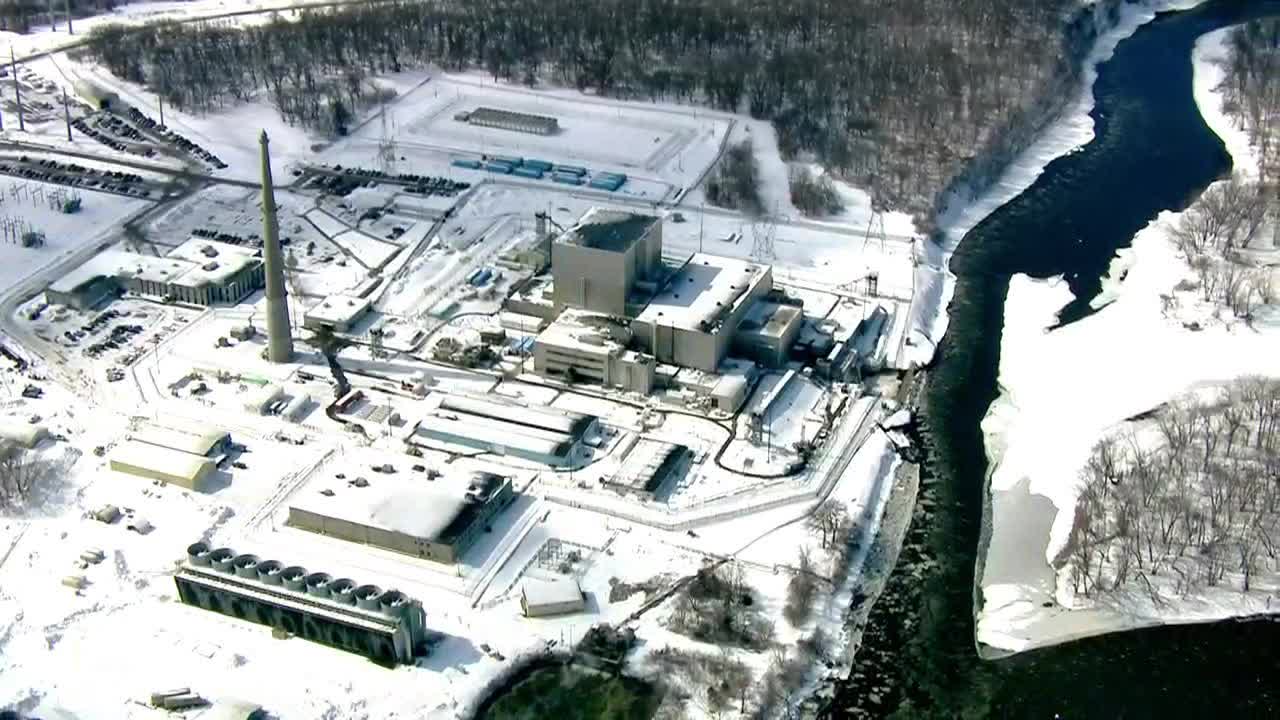Feds clear Monticello nuclear plant to operate through 2050

Chopper 5 captures the Monticello Nuclear Generating Plant from the air on Friday, March 17, 2023. (KSTP)
The Monticello nuclear power plant gained federal clearance to operate through 2050 — pending approval from state regulators — extending the life of one of two such facilities in Minnesota.
After years of inspections and safety reviews, the U.S. Nuclear Regulatory Commission (NRC) approved a 20-year operating extension, Xcel Energy announced on Thursday. The company said it will now seek a matching license extension from the Minnesota Public Utilities Commission.
State regulators had previously approved the Monticello plant to operate through 2040.
The power plant opened in 1974 and recently came under scrutiny when a faulty pipe leaked water contaminated with tritium, a radioactive form of hydrogen, into the soil and groundwater near the Mississippi River. Xcel officials said no contamination was detected in the river itself.
The leak was first detected in November 2022, but the public was not notified until March 2023. Federal officials designated the event as a “non-emergency,” and during a 2023 meeting discussing Xcel’s application for a 20-year renewal, an NRC representative assured the community that the spill “does not affect public heath and safety.”
RELATED: Watered Down: Minnesota agencies criticized for delayed alerts about recent leaks and spills
Xcel says the Monticello nuclear plant, which powers roughly half a million households, is a key asset toward achieving Minnesota’s goal of 100% carbon-free energy by 2040.
“As the only 24/7 carbon-free energy source we have, nuclear energy will be key to accelerating our journey to a clean energy future while ensuring we also meet the unprecedented growth in our customers’ demand for electricity,” said Bob Frenzel, Xcel Energy’s chairman, president and CEO.
RELATED: Minnesota has 17 years to reach 100% renewable energy. Experts say we’re already behind schedule.
Minnesota’s other nuclear power plant — the Prairie Island facility near Red Wing — has two reactors that are licensed through 2033 and 2034, according to the Nuclear Energy Institute.